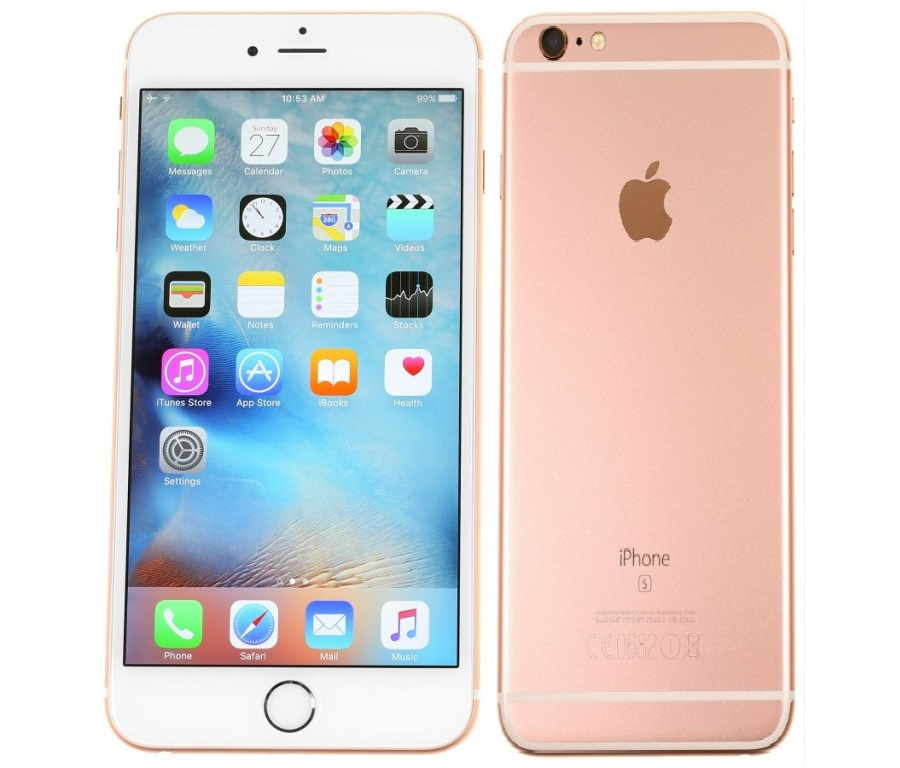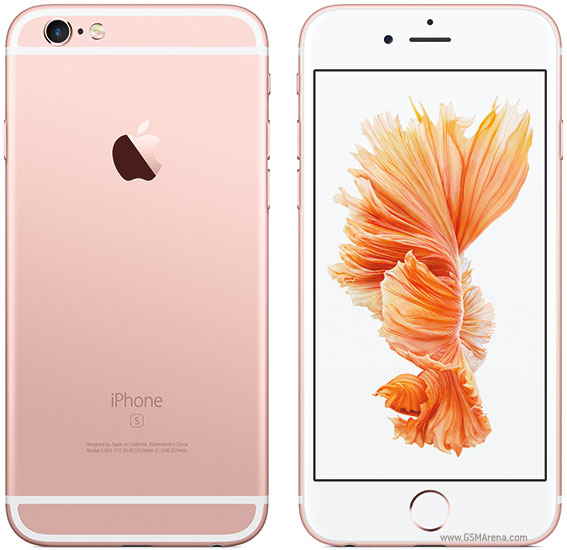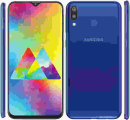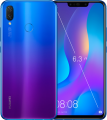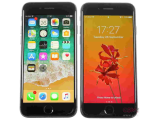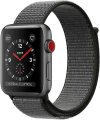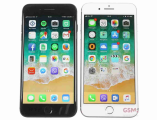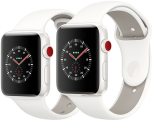Apple iPhone 6s Prices
Important Note.
- All prices are in Pakistani Rupee (PKR)
- Prices may vary at stores and our effort will be to provide you with the updated prices.
- The latest price of Apple iPhone 6s was obtained on 17 مئی, 2019. The prices at the original stores had been updated on the respective mentioned dates.
- Find out WhatMobile price has dropped in Pakistan by selecting Notify Price Drop button
- Find out WhatMobile has better specifications by clicking Add To Compare Button find out what Mobile has better reviews by visiting our reviews section
- Find out WhatMobile is cheaper on which retailer by clicking Compare prices from retailers button
Search Terms
- Apple iPhone 6s
Specifications
| GENERAL | |
| 2G Network | GSM 850 / 900 / 1800 / 1900 CDMA 800 / 1700 / 1900 / 2100 |
|---|---|
| 3G Network | HSDPA 850 / 900 / 1700 / 1900 / 2100 CDMA2000 1xEV-DO |
| 4G Network | LTE band 1(2100), 2(1900), 3(1800), 4(1700/2100), 5(850), 7(2600), 8(900), 12(700), 13(700), 17(700), 18(800), 19(800), 20(800), 25(1900), 26(850), 28(700), 29(700) - A1688 |
| Sim | Nano-SIM - Apple Pay (Visa, MasterCard, AMEX certified) |
| Announced | 02/09/2015 |
| Status | Available. Released 2015, September |
| BODY | |
| Dimensions | 138.3 x 67.1 x 7.1 mm (5.44 x 2.64 x 0.28 in) |
| Weight | 143 g (5.04 oz) |
| DISPLAY | |
| Display Size | 4.7 inches, 60.9 cm2 (~65.6% screen-to-body ratio) |
| Resolution | 750 x 1334 pixels, 16:9 ratio (~326 ppi density) |
| MultiTouch | Yes |
| Protection | Ion-strengthened glass, oleophobic coating - 3D Touch display |
| SOUND | |
| AlertTypes | Vibration, proprietary ringtones |
| LoudSpeaker | Yes |
| 3.5mm jack | Yes - 16-bit/44.1kHz audio - Active noise cancellation with dedicated mic |
| MEMORY | |
| CardSlot | No |
| Internal | 16 GB, 2 GB RAM |
| DATA | |
| GPRS | Yes |
| EDGE | Yes |
| Speed | HSPA 42.2/5.76 Mbps, LTE-A (2CA) Cat6 300/50 Mbps, EV-DO Rev.A 3.1 Mbps |
| WLAN | Wi-Fi 802.11 a/b/g/n/ac, dual-band, hotspot |
| Blue Tooth | 4.2, A2DP, LE |
| NFC | Yes (Apple Pay only) |
| USB | 2.0, proprietary reversible connector |
| CAMERA | |
| Camera Primary | 12 MP (f/2.2, 29mm, 1/3", 1.22 µm), phase detection autofocus, dual-LED dual-tone flash, check quality |
| Camera Features | Geo-tagging, simultaneous 4K video and 8MP image recording, touch focus, face/smile detection, HDR (photo/panorama) |
| CameraVideo | 2160p@30fps, 1080p@60fps,1080p@120fps, 720p@240fps, check quality |
| CameraSecondary | 5 MP (f/2.2, 31mm), 1080p@30fps, 720p@240fps, face detection, HDR, panorama |
| FEATURES | |
| Processor Cores | Dual-Core |
| OS | iOS 9, upgradable to iOS 11.2 |
| CPU | Dual-core 1.84 GHz Twister |
| Sensors | Fingerprint (front-mounted), accelerometer, gyro, proximity, compass, barometer |
| Messaging | iMessage, SMS (threaded view), MMS, Email, Push Email |
| Browser | HTML5 (Safari) |
| Radio | No |
| GPS | Yes, with A-GPS, GLONASS, GALILEO, QZSS |
| Java | No |
| Colors | Space Gray, Silver, Gold, Rose Gold |
| Others | - Siri natural language commands and dictation - iCloud cloud service - MP3/WAV/AAX+/AIFF/Apple Lossless player - MP4/H.264 player - Audio/video/photo editor - Document editor |
| BATTERY | |
| Battery | Non-removable Li-Ion 1715 mAh battery (6.91 Wh) |
| StandBy | Up to 240 h (3G) |
| TalkTime | Up to 14 h (3G) |
| MISC | |
| SARUS | 1.14 W/kg (head) 1.14 W/kg (body) |
| SAREU | 0.87 W/kg (head) 0.98 W/kg (body) |
Reviews

One of the surprise features of the iPhone 6s was the announcement of Live Photos -- something of a cross between a GIF and those moving images you see in the Harry Potter films. Seeing the Live Photos feature in action is pretty cool, and surprisingly, it’s one of the more popular features of the new iPhone 6s. Matter of fact, here’s what the Wall Street Journal wrote about Live Photos: “The absolute best thing about the 6s is Live Photos. While capturing a still photo, it also captures a bit of live action. They’re awesome for reliving fun moments, especially of an active puppy or child, and anyone with an iOS 9 iPhone or iPad can view them.”
Yeah, that got my attention too. But just what exactly are Live Photos and how are they different from regular photos and movies? We took a look to find out.
What Are Live Photos?
At its most abstract, a Live Photo is a still photo that also includes a moment in time. I keep referring to them as a cross between a GIF and those moving photos you see in newspapers in the Harry Potter films. By default a Live Photo looks like a still image, but when you touch it the image briefly springs to life.
How do Live Photos work?
When you take a Live Photo a single 12MP image is captured, but also the iPhone captures 1.5 seconds with 15 frames per second of video before and after the static photo. It then combines these 1.5 seconds of 15 FPS videos to achieve its motion effect. By default Live Photos appear static in your photo albums, but when you press on them they spring to life and start playing the 1.5 second of recorded video.
Do Live Photos capture audio?
Yep. But as The New York Times points out “when Live Photos are captured, they include audio. I'd like the option to disable that because images alone can speak loudly enough.”
How can you view Live Photos?
If you have a capable device all you simply need to do is navigate to the Live Photo in your camera roll or album and tap or click on it to see it move.
What else can you do with Live Photos?
Umm…truthfully, not much. You can view them, and on the iPhone 6s and iPhone 6s Plus you can set them as your wallpaper and activate their movement with a touch, but that’s about it.
What devices can take Live Photos?
The only devices that can take Live Photos are the iPhone 6s and iPhone 6s plus. Live Photos cannot be taken on the new iPad mini 4 or iPad Pro. Note, however, that Live Photos can be taken with BOTH the front and back cameras of the iPhone 6s and iPhone 6s Plus.
What is a Live Photo file made of?
This is where it gets interesting–and goes a long way to explaining what a Live Photo can and can’t do and how it can be shared. Technically speaking a Live Photo file is made up of two separate files: a 12MP JPEG image and a 3-second (1.5 second before and after the still image) MOV video file. These two files are contained in a package container and simultaneously displayed as one when you view a Live Photo on your device. Because a Live Photo is both a still image and a video file, each Live Photo will take up twice the space of a normal photo.
(Image via TechCrunch)
What devices can view Live Photos?
The good news is that while only the iPhone 6s and iPhone 6s Plus can take Live Photos, Live Photos can be viewed on many more devices–it they’re Apple devices. Apple hasn’t released a full list of devices, but theoretically any iOS device capable of running iOS 9 will be able to view Live Photos. Also, the OS X Photos app in OS X El Capitan will be able to view Live Photos–you’ll click on them to see their motion.
That being said, any Mac not running OS X El Cap will NOT be able to view Live Photos natively. Nor will Windows or Android devices. However, if you transfer a Live Photo to one of the devices that can’t view them, at the very least you’ll be able to view the still image of the Live Photo on those devices. The Live Photo will also transfer over as two separate files (a JPEG and MOV file) so you could view the two separately as well.
Can you edit Live Photos?
Yes, but only the still image part of the Live Photo (the JPEG file). Any changes made to that still image will not be translated across to the associated video portion. Again, the New York Times has a great suggestion: “You also can't edit Live Photos. You can only apply an edit to the still frame, but not the motion frames. It would be ideal to at least be able to make minor adjustments to Live Photos, like increasing brightness or contrast.”
Can you email a Live Photo to someone?
Yes–and if they save it on their iOS 9 device or OS X El Cap Mac they can view them just fine. But if you send a Live Photo to someone with an older iOS device, older Mac, or Android or Windows device, they’ll receive them as two different files: a still JPEG image and a MOV video file.
What are the best types of images to capture as Live Photos?
TechCrunch sums this question up perfectly: “In my experience, Live Photos work best when capturing ambience, not action. Because the frame rate is relatively low, moving the camera a ton while you shoot them or having a subject move will display a bit of jitter. If, however, you're shooting a still image with some moving elements, the effect is extraordinary.”
Write Your Own Review
My Recent Reviews
- Be first to post review for this product.
comments powered by Disqus




